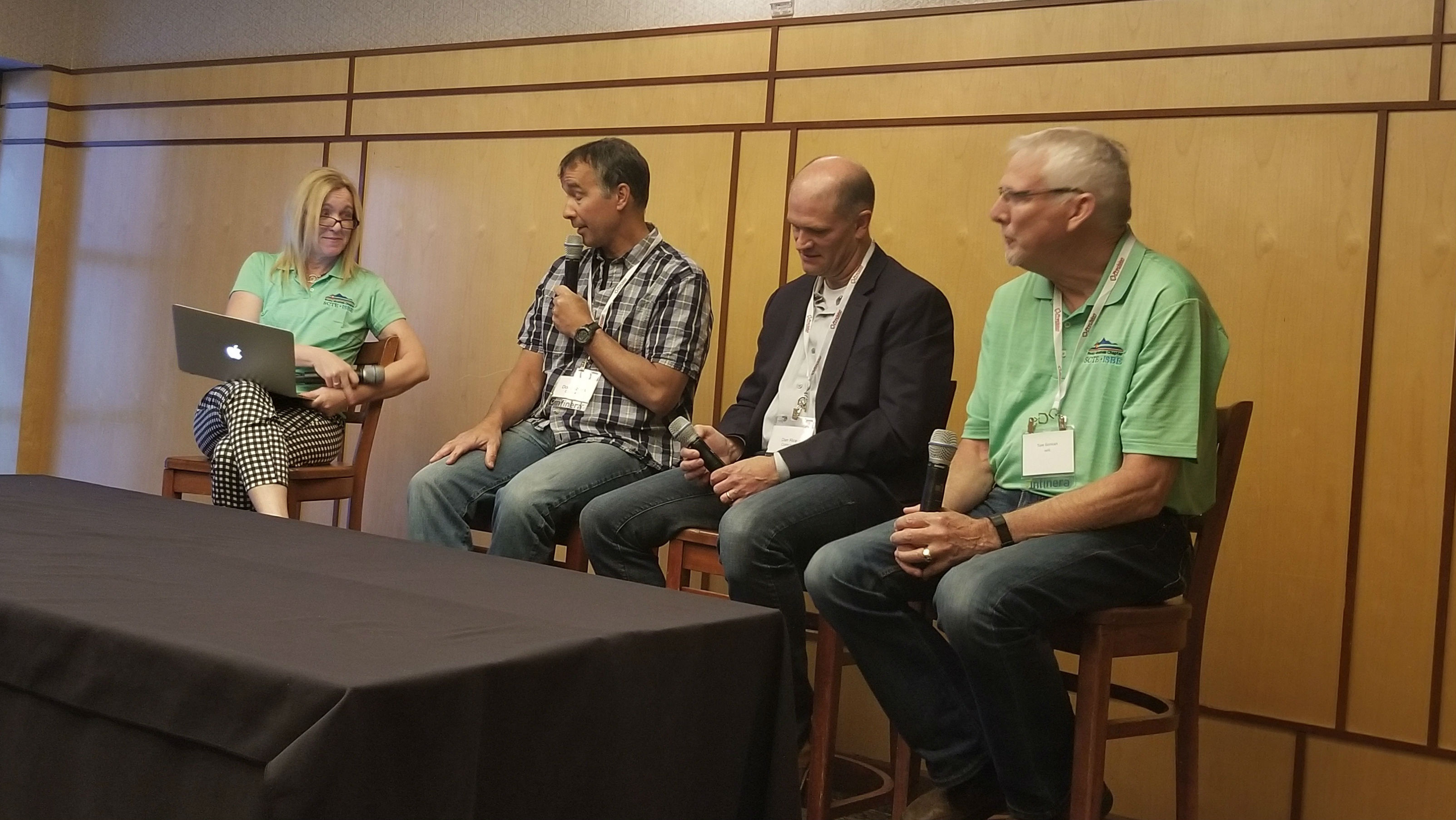Full Duplex DOCSIS Interop Testing on the Horizon

Englewood, Colo. – Full-fledged deployments of Full Duplex (FDX) DOCSIS are likely still a couple of years away, but CableLabs believes that suppliers have made enough progress to be ready for initial interoperability testing later this year.
Interops are expected to underway in earnest in 2019, but the start of that work could get underway by the fourth quarter of 2018, Doug Jones, principal architect at CableLabs, said here Wednesday (June 6) at an operations roundtable that was part of the Rocky Mountain SCTE Chapter’s 23rd annual Engineering Symposium.

That work will help to establish important groundwork on product interoperability for FDX DOCSIS, an annex to the DOCSIS 3.1 specs that will support symmetrical multi-gigabit speeds on widely deployed hybrid fiber/coax (HFC) networks.
CableLabs released the physical layer specs for FDX DOCSIS last fall, and followed with the addition of MAC Layer support in January.
RELATED: Full Duplex DOCSIS Takes Another Step Forward
Though the prescribed path to FDX DOCSIS involved a node-plus-zero network (the creation of a passive network whereby there are no amplifiers between the node and the home), CableLabs is also working on other approaches that won’t necessarily require N+0 to get MSOs started on that path, Jones noted.
CableLabs, he explained, is building a plan based on a node-plus-five environment. “We’re going to prove that FDX equipment will work on that, as a path toward FDX DOCSIS and get you that 1-Gig symmetrical tier maybe without having to go node-plus-zero first,” Jones said.
Multichannel Newsletter
The smarter way to stay on top of the multichannel video marketplace. Sign up below.
Having some flexibility is important because HFC networks are far from uniform between cable operators and even inside the operators themselves. Some have segments of the network at node-plus-15 and others at node-plus-zero, and everything in between.
And there are major business decisions to consider with moving to N+0.
“There’s a big battle that exists out there on cost that’s going to keep thwarting node-plus-zero for a while,” said Tom Gorman, the founder and president of opXL, and a cable engineering exec late of operators such as Comcast and Charter Communications.
By way of example, he said some plant extensions still require an amplifier to boost the signal.
“There’s got to be a very concerted effort and plan and willingness to spend to get to that node-plus-zero [architecture],” Gorman said. “There’s still a lot of work to be done there.”
And as cable operators take fiber deeper into the network, Gorman warned that they must be careful to ensure that their workforces continue to support technicians who know their way around coax.
“We’re finding that there’s not enough people to splice coax,” Gorman said. “The coax splicing is becoming the dying art, and [cable operators] still have a ton of coax out there. That’s where there’s a hole that’s getting bigger and bigger.”
The panel, moderated by Leslie Ellis, president of EllisEdits and a Multichannel News contributor, also touched cable’s role with 5G, and how MSOs can participate in that evolution amid the move to a standard that will deliver higher speeds and lower latencies and will be enabled in part by small cells that can be backhauled by cable’s widely deployed HFC plant and growing fiber networks.
RELATED: Cable is Wired for 5G
Cable’s move to FDX DOCSIS and distributed access architectures make HFC suitable for dense, 5G microcells, Dan Rice, vice president of HFC architecture at Comcast, said.
“All [telecom companies] are headed to the same spot, with fiber to remote nodes and physical layers out in the node, he said.
RELATED: Need to Know: 5G-Riding Wireless’s Next Wave
Gorman added that future 5G applications such as low-latency connectivity for autonomous vehicles, will present new challenges and opportunities for the cable industry.
Cable will need to focus the accuracy, reliably and availability of those 5G networks.
“The applications for [5G] will be lifeline applications, and it just makes our plant reliability all the more important,” Gorman said. “This is critical stuff we’re talking about beyond that 5G can deliver more bandwidth wirelessly.”
More details from this panel, including cable’s work with Full Duplex DOCSIS and the emerging use of machine learning for cable network operations will be featured in the June 11 issue of Broadcasting & Cable.
